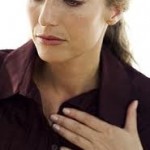Archive for April, 2013
Prostitutes are being trained to use AEDs
Posted by: | CommentsSeveral brothel owners in a small lakeside Swiss town have begun training their staff (prostitutes) in the use of an Automated External Defibrillators (AED). One sex club owner stated: “Having customers die on us isn’t exactly good publicity”. During strenuous activities, such as sexual intercourse, an additional burden is placed upon your cardiac system and may cause many men in poor health to go into cardiac arrest.
When an incident occurred, emergency medical services was called and the staff began CPR chest compressions on the client. Another staff member would immediately retrieve the AED. AEDs have shown to be very instrumental in helping correct a heart that’s in fibrillation. Studies have shown that resuscitation rates from cardiac arrest increases significantly when an AED is used in conjunction with CPR within the first three minutes of a victim going into ventricular fibrillation. The longer it takes for this to happen the chances of survival decreases sharply. In most cases waiting for the ambulance to arrive, may be too late.
With AEDs available and prostitutes trained in there use, these brothels are creating an extra layer of safety and protection for their clientele. For more information on AEDs or classes that include CPR Certification training, call us at 1-888-313-2444.
Stroke in Children and Infants
Posted by: | CommentsStroke in children is not as rare as we once thought. As medical science advances, previously undiagnosed strokes suffered by children are now being identified and protocols are being developed to treat this condition horrible condition.
Blood Clots
The majority of strokes in children come from the forming of a blood clot which travels to the brain and blocks the flow of blood. Or a narrowing of a blood vessel causing a reduction in the amount of oxygen being supplied to the brain. This lack of oxygen to the brain causes brain death.
The usual treatment for adults experiencing a stroke due to a blood clot is the administrations of a drug called, tissue plasminogen activator (TPA). Unfortunately this drug, in most cases, can be too strong for infants and children.
Hemorrhagic Stroke
Hemorrhagic Stroke is when a blood vessel in the brain ruptures, blood flows into parts of the brain where it’s not supposed to go. Because the vessel is ruptured, blood isn’t transported to the right locations and parts of the brain is deprived of oxygen. This may lead to permanent brain death or injury. The risk of hemorrhage is higher with certain illnesses such as hemophilia.
Symptoms
In newborns the first symptoms, are often seizures that involve the chaotic spasms of one arm or one leg. For children, migraines, head trauma, dehydration and sickle cell are the common symptoms and risk factors. The risk of stroke in children is greatest in the first year of life, particularly in the first two months.
Prevention in adults is in modifying behaviors and taking medication to prevent the first stroke. For children, since it is more difficult to identify and prevent the first stroke, the primary prevention techniques are to prevent second or additional strokes.
7 Body Parts Indicating Health Issues
Posted by: | CommentsYour body can tell a lot about your health. In fact, the appearance or size of certain body parts can give an indication on specific health issues or possible disease. Based upon the results of several studies, here are some of the possible health issues associated to specific body parts.
Earlobes and Cardiac Disease – An earlobe crease or wrinkle on one or both earlobes may indicate cardiovascular disease. The American Journal of Medicine found in multiple studies that a crease on one lobe increased your risk of a cardiac event by 33%. Wrinkles on both lobes increased the risk by 77%.
Bra Size and Diabetes – Women with a bra size of a D cup or better were 1.5 times more likely to develop type 2 diabetes compared with women who wore an A size or smaller.
Finger Length and Osteoarthritis – Women whose index fingers were shorter than their ring finger were twice as likely to develop osteoarthritis in their knees.
Height and Age – Women 5-foot 2-inches or shorter are more likely to live longer than their taller counterpart.
Long Legs and Liver Disease – Though you may live longer being shorter, women with leg lengths between 20 to 29 inches had a higher incident of liver disease.
Arm’s Length and Alzheimer’s – Women with shorter arm spans were 1.5 times more likely to develop Alzheimer’s disease than those with longer reaches. Measure the span of your arms from finger tips to fingertip. Measurements of less than 60 inches puts you on the wrong side.
Blood Type – People with blood types of A, B or AB were 44% more likely to develop pancreatic cancer than those with type O.
If you have any of these issues, it doesn’t automatically mean you have this condition, but it would be wise to discuss with your physician. For more information on heath issues, first aid and CPR training, call us at 1-888-313-2444.
Bad Breath and Breast Cancer
Posted by: | CommentsCan your bad breath detect breast cancer and other diseases? Someday in the near future it just might. Currently doctors use several breath odors in diagnosing certain diseases. A strong fruity odor from your breath may indicate untreated diabetes or other irregular odors can signify either liver or lung disease.
The process of expelling breath from your lungs is one way the body uses to excrete waste. Gases are filtered out of your blood as they pass through your lungs. As diseases develop in your body, they create certain wastes or bio-markers that are excreted as gases in our blood. These gases are then released out of the body through your expelled breath. The idea is to measure these gases or combination of gases to assist in diagnosing developing diseases.
Scientist are currently developing a technique that can measure these gases or volatile organic compounds (VOCs) in your expelled breath. There are approximately over 3000 of these compounds in every breath. There are machines that are so sensitive, that they can detect a single molecule amid several billion air molecules. This process will be initially used to study breaths of patients with renal disease and to study children with respiratory problems such as asthma or cystic fibrosis.
The next goal in this evolving technology would be, to detect one molecule in a trillion. This would broaden the applications and it is theorized that scientist and doctors would then be able to identify the beginnings of breast cancer, colon cancer, heart disease as well as several other life threatening diseases. The earlier they can detect these diseases and begin treatment, the higher the chance of a patients survival.
So it is not too hard to imagine, that sometime in the near future, when you’re visiting your doctor, he/she can possibly do a fast, low cost, easy to preform, non-invasive breath test to diagnose a broad range of diseases or medical conditions.
For more information concerning first aid and CPR training in the San Francsico, San Jose Bay Area, call us at 1-888-313-2444









